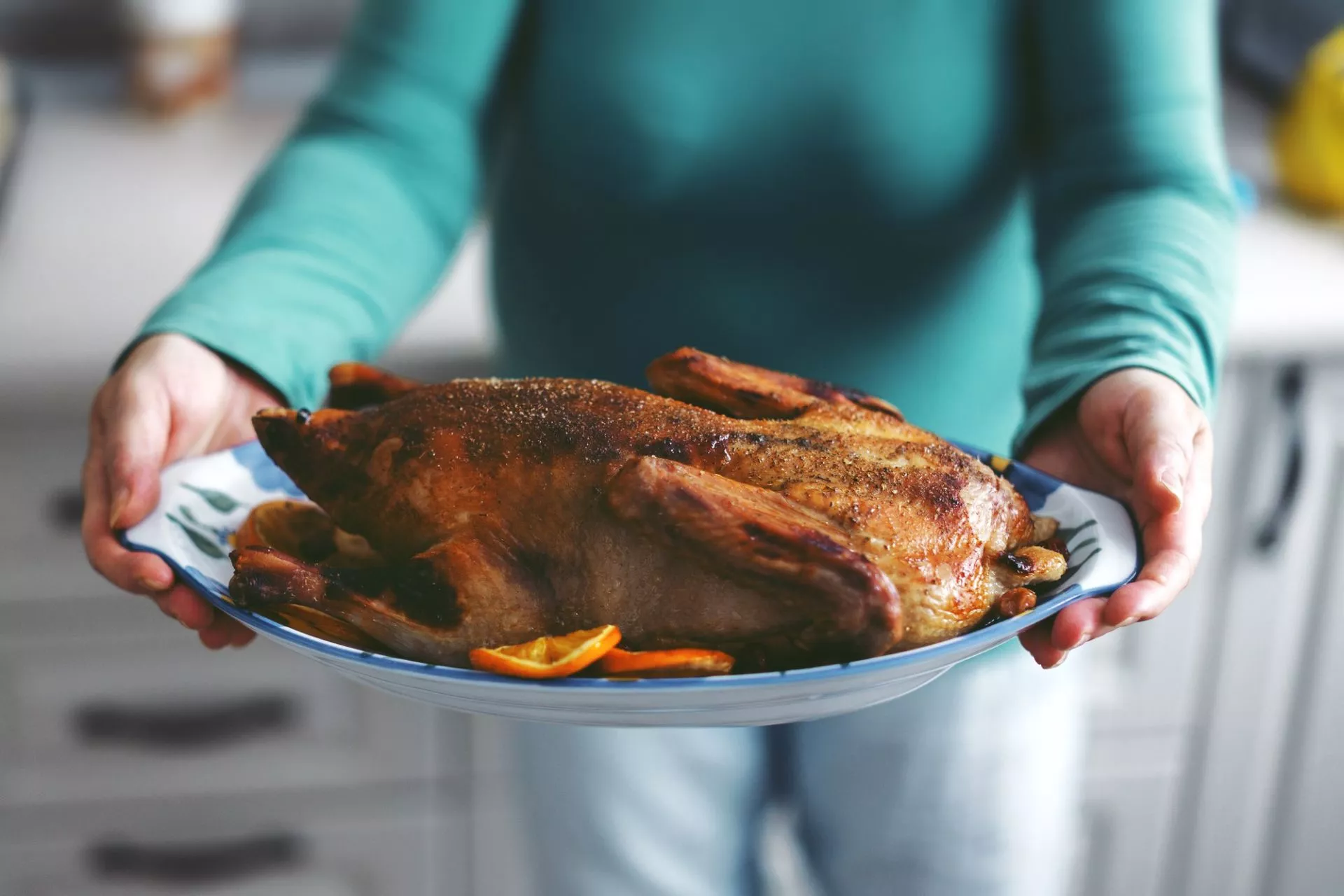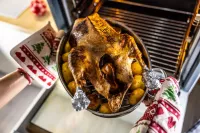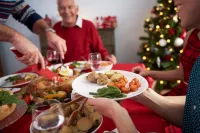Roast Duck
The key to a great roast duck is to help release as much fat from the duck as possible, ensuring the meat doesn’t taste greasy. The most important detail is to ensure the duck skin is pricked all over to allow even dispersion of all the fat in to your baking tray.
Method for Roasting:
This method outlined below is based on a large duck that should feed four adults.
- Set the oven temperature on low heat. We recommend 120C for the first stage of cooking. Remember to remove any excess fat from the cavity and set it aside if you want to use duck fat for other cooking purposes. Then score the duck skin in a criss-cross manner but avoid cutting deep into the flesh. Use a very sharp knife, and then, finally, it is a good idea to prick the duck all over with a fork or similar.
- Rub the skin with sea salt and put the duck breast side down on a rack over a tin baking tray. The duck will cook nice and slowly at 120C for about 3 hours. Baste and prick during this long cooking period.
- The final stage is to turn up the heat to 180C and turn the duck over. Then it can cook at the higher temperature for a last 30 minutes and afterwards should be left to rest for at least 10 minutes.
The leg joints should now feel loose if it’s thoroughly cooked.
- Tip and then pour the excess fat into a suitable container, best if this is glass or ceramic. When cool this can be stored in the fridge until you need any fat for cooking.
Pan-Fried Duck Breast
- Criss-cross the duck skin and prick it all over, but always avoid cutting too deep into the meaty flesh. Season with sea salt and black pepper and leave the meat until room temperature.
- Place the skin side down in the cool pan, slowly bring up to temperature, and begin frying. Carry on cooking off and rendering the fat for 6 -7 minutes. Keep on a high flame until the skin is golden brown and there is no white fat still visible.
Allow 10 minutes for this to achieve a delicious rich crispy finish. Pour off the excess fat into a glass or ceramic container.
- Turn the breast over and cook off the flesh side until the meat is browned. One test is that the meat should feel soft to the touch and spring back when prodded!
- Leave the meat to rest for at least 10 minutes as it will taste much better and tenderise like this. Bon apettit!
That’s all there is to it. If you are looking for an alternative to chicken, then why not consider duck for your next meal. We’re sure you will enjoy it.

 How to Cook a Goose
How to Cook a Goose How to Make an Easy Christmas Dinner
How to Make an Easy Christmas Dinner



